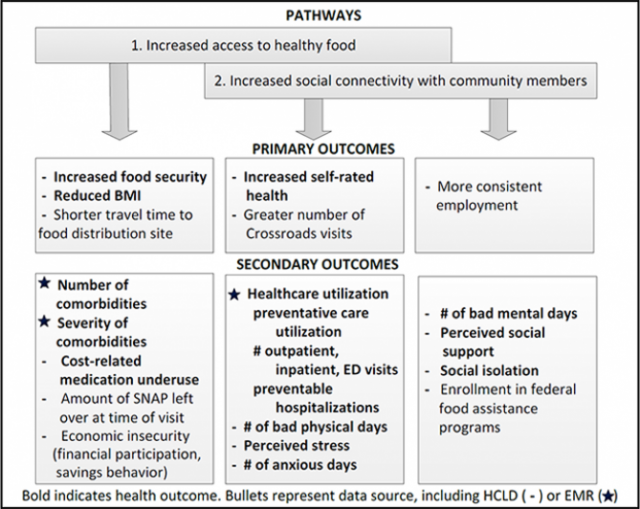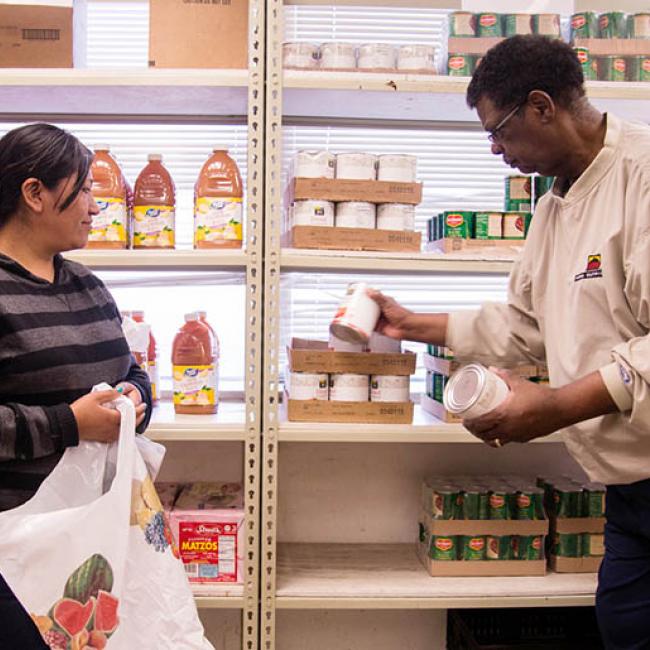Project Summary
The project team worked to expand the reach, scope, validity, and availability of The Hunger Center Longitudinal Database. They also evaluated an ongoing, large-scale natural experiment of a shift in charitable food distribution to a community-based model.
Research Questions/Aims
- Will increasing access to healthy food and place-based social connectivity result in improved health and economic outcomes?
Actionability
- Inform local, regional, and national efforts to ensure efficient and equitable food distribution to improve, and better understand, health among food insecure populations.
Results
The research team observed an inverse relationship between receipt of food assistance and health and health behaviors among food insecure people. Receipt of SNAP and food bank assistance was associated with the poorest health, while receiving no assistance was associated with the best health. For example, functional limitations were twice as prevalent among people receiving both types of food assistance than among those receiving none. Receipt of food assistance is an overlooked factor associated with health and has the potential to shape future chronic disease prevention efforts among the food insecure.
After controlling for client/household characteristics, Community Distribution Partner usage is associated with less household food insecurity. The association between food insecurity and Community Distribution Partner usage is almost entirely explained by the frequency with which clients choose to use food assistance.
Outcomes

Methodology
Development of the expansion of the Hunger Center Longitudinal database. Evaluation of the Community Distribution Partner (CDP) model looking at primary outcomes using spatial difference-in-difference methods, a quasi-experimental analytic strategy applied to longitudinal data. Multi-level, cross-sectional analyses for secondary health and economic outcomes.

University of Texas Southwestern Medical Center